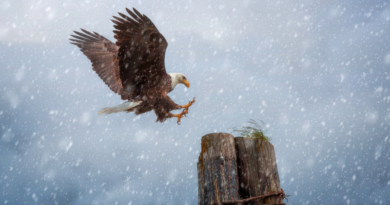Seven teachings from the Tibetan book of living and dying
(Rise Earth | Azriel Re’Shel) Do you ever wish you had a manual for life? Something you could turn to for the answers on how to live a fulfilled, successful and happy life?
Religion and spirituality have long attempted to provide a roadmap for souls seeking a meaningful life. And the Tibetan Book of Living and Dying, written by Sogyal Rinpoche in 1992, may just be one of the most important guides to living a better life. The book presents the teachings of Tibetan Buddhism.
When I first read the book 20 years ago, I was working with the dying and thought it would help me to support them, as well as myself later in life, when death became more of a possibility. But I soon discovered it is a book about the death of the unreal and is very much a book that helps you to truly live. It marked a turning point in my life, where I committed deeply to actually living a spiritual life instead of only having the concepts of one.
Happiness is up to you.
While the aim of the Tibetan book is to support people to die a good death and to help each of us experience a peaceful death that will lead to a positive next life, the Tibetan Book of Living and Dying also has many incredible teachings on how to live a happy life. It teaches us about the interplay of life and death and is a spiritual classic for all seekers on a path to living a full and happy life.
Sogyal Rinpoche’s book has been described as having the power to touch the heart and awaken the consciousness. In this tome he explores: the message of impermanence; evolution, karma and rebirth; as well as the nature of the mind and how to train the mind through meditation. The Tibetan Dzogchen master shows us how to follow a spiritual path in the modern world and provides wonderful teachings on the practice of compassion; along with ways of supporting the dying, including specific spiritual practices for you to use at the moment of death.
A peaceful death.
As a Buddhist, I view death as a normal process, a reality that I accept will occur as long as I remain in this earthly existence. Knowing that I cannot escape it, I see no point in worrying about it. I tend to think of death as being like changing your clothes when they are old and worn out, rather than as some final end. Yet death is unpredictable: We do not know when or how it will take place. So it is only sensible to take certain precautions before it actually happens. Naturally, most of us would like to die a peaceful death, but it is also clear that we cannot hope to die peacefully if our lives have been full of violence, or if our minds have mostly been agitated by emotions like anger, attachment, or fear. So if we wish to die well, we must learn how to live well: Hoping for a peaceful death, we must cultivate peace in our mind, and in our way of life.
Here are a few important teachings from this comprehensive, practical and profound manual on how to live life.
1. Slip out of the noose of your habitual anxious self.
The hard knocks of life can turn us into rigid, tight-lipped, and tense humans. You only have to watch the grey-faced, black-clad commuters to see this. I attended a retreat some years back with another Dozghen master, Namkhai Norbu, and he said the biggest issue with Westerners is that we do not know how to relax. Even when we think or feel we are relaxing, often we are not. In fact, we are degrees and degrees away from being relaxed, and it can take years of practice to learn the art of true relaxation. This beautiful teaching (explained in the excerpt below) gives us such a clear picture and direction on how to achieve this state of pure relaxation, much like a cat asleep on its back; paws floating in the air above, blissfully surrendered to the moment.
Above all, be at ease, be as natural and spacious as possible. Slip quietly out of the noose of your habitual anxious self, release all grasping, and relax into your true nature. Think of your ordinary emotional, thought-ridden self as a block of ice or a slab of butter left out in the sun. If you are feeling hard and cold, let this aggression melt away in the sunlight of your meditation. Let peace work on you and enable you to gather your scattered mind into the mindfulness of Calm Abiding, and awaken in you the awareness and insight of Clear Seeing. And you will find all your negativity disarmed, your aggression dissolved, and your confusion evaporating slowly like mist into the vast and stainless sky of your absolute nature. – Sogyal Rinpoche, The Tibetan Book of Living and Dying
2. Know yourself.
So much of Buddhism emphasises discovering the timeless, that is, what lies beneath the ‘false’ self, and how to let go of all that encumbers us and causes us to lose sight of what is real and already there. To be with ourselves in those quiet moments is essential to spiritual awareness and healing.
Without our familiar props, we are faced with just ourselves, a person we do not know, an unnerving stranger with whom we have been living all the time but we never really wanted to meet. Isn’t that why we have tried to fill every moment of time with noise and activity, however boring or trivial, to ensure that we are never left in silence with this stranger on our own? – Sogyal Rinpoche
These ancient teachings continue by urging us to realise the profound simplicity and ease of spirituality. It is something deeply natural that is part of everyday life.
3. Spiritual truth is common sense.
Spiritual truth is not something elaborate and esoteric, it is in fact profound common sense. When you realise the nature of mind, layers of confusion peel away. You don’t actually “become” a buddha, you simply cease, slowly, to be deluded. And being a buddha is not being some omnipotent spiritual superman, but becoming at last a true human being. – Sogyal Rinpoche
My teachers in India often say that spirituality is about moving from merely existing, to actually living. This is living without the mental clutter; the constant dissection of life, so that when we are eating a mango, for example, we fully taste and experience that mango. We are not meant to be miserable, confused, or mired in mental debris. It is our birthright to be peaceful and content. And this is for all of us, not just a few enlightened ‘chosen ones’. Each one of us can reach a state of awakened consciousness.
4. Meditation unknots the mind.
The book shows the incredible power meditation has on the mind, as exampled in the following quotes:
Devote the mind to confusion and we know only too well, if we’re honest, that it will become a dark master of confusion, adept in its addictions, subtle and perversely supple in its slaveries. Devote it in meditation to the task of freeing itself from illusion, and we will find that, with time, patience, discipline, and the right training, our mind will begin to unknot itself and know its essential bliss and clarity. – Sogyal Rinpoche
The gift of learning to meditate is the greatest gift you can give yourself in this life. For it is only through meditation that you can undertake the journey to discover your true nature, and so find the stability and confidence you will need to live, and die, well. Meditation is the road to enlightenment … Quietly sitting, body still, speech silent, mind at peace, let your thoughts and emotions, whatever arises, come and go, without clinging to anything. – Sogyal Rinpoche
5. Nothing ever works out as you want.
I have a daily physical reminder of the wisdom of this next quote from the book. Each one of my four children was unexpected. Despite the best plans and precautions, I have four beautiful beings who have changed my life in amazing ways and I was definitely powerless in stopping the force of the universe that created them.
Planning for the future is like going fishing in a dry gulch; nothing ever works out as you wanted, so give up all your schemes and ambitions. If you have got to think about something— Make it the uncertainty of the hour of your death. – Sogyal Rinpoche
6. Embrace impermanence and humility.
It can be deeply humbling to consider that one day we will die and that there is nothing, not one thing, we can do to prevent this. We are utterly impotent and powerless against this total certainty. In fact, death is the one thing we can be sure about in life.
This world can seem marvellously convincing until death collapses the illusion and evicts us from our hiding place. – Sogyal Rinpoche
I remember some years ago, walking in New York with my brother and gazing up at the World Trade Centres; so much steel, standing invincible, at such an incredible height. It was a breathtaking construction and it made me contemplate how living in a man-made environment makes you forget how insignificant you are. Somehow your ego becomes overblown, knowing that all that is around you was made by man. When you visit or live in the great forests, extraordinary canyons or traverse the mighty ocean; completely at the will of the wildest nature, you have a much more accurate sense of your place in the world. This humility and respect for the forces of the universe engenders gratitude and wonder. When we live from this place of humility and reverence, we open ourselves to higher inspiration and life becomes extraordinary.
7. The optical delusion of separateness.
While this is only a tiny taste of this amazing book, if you consider these teachings, your life may shift in miraculous ways and you most likely will discover new life as the old dies away. For me, this final quote sums up the most important message of its profound wisdom:
How hollow and futile life can be when it’s founded on a false belief in continuity and permanence.
Source: Rise Earth
You may also like:




